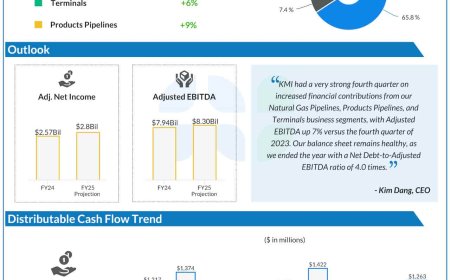Top Strategies for Enhancing IT Security
With new problems emerging every day, cyber risks are growing at an alarming rate. Potential threats abound in the digital world, ranging from phishing tactics intended to steal confidential data to ransomware attacks that pose a threat to companies. Businesses and individuals should plan appropriately for IT security enhancements in such risky circumstances. This article […] The post Top Strategies for Enhancing IT Security appeared first on Insights Success.

With new problems emerging every day, cyber risks are growing at an alarming rate. Potential threats abound in the digital world, ranging from phishing tactics intended to steal confidential data to ransomware attacks that pose a threat to companies. Businesses and individuals should plan appropriately for IT security enhancements in such risky circumstances. This article highlights some of the best practices for protecting digital resources in today’s networked society.
The prices are already too high. This is what cybercrime threatens to run the world into at an estimated $10.5 trillion annually by the year 2025. This massive figure only highlights the call for organizations to strengthen their defenses against cyber attacks. Critical and practical are being mixed: this should include the most advanced technology, combined with best practices to build a resilient posture in security. With major strategies such as zero-trust architecture, multi-factor authentication, and AI-powered threat detection, organizations significantly lessen the risk of falling into cyberattacks.
Adoption of Zero Trust Architecture
The most effective way to improve IT security is to have a Zero Trust Architecture. The security model follows the premise that no one or thing, either within or outside the network, is trusted by default. Each access request should instead be continuously verified so that access is limited to authorized people when dealing with sensitive data and systems. Organizations implementing zero trust principles have reported reducing breaches by 50% over recent reports.
Multi-Factor Authentication (MFA)
Another very important approach to improving IT security is Multi-Factor Authentication (MFA). MFA adds another layer of protection by requiring users to provide multiple forms of verification before accessing systems or data. Traditional password-only systems are increasingly vulnerable to breaches; however, MFA drastically reduces the chances of unwanted access.
Statistics show that MFA can prevent as much as 99.9% of automated cyberattacks. Organizations can make it difficult for cybercriminals to penetrate their systems by using something the user knows (such as a password) in combination with something they have (like a smartphone or hardware token). MFA on all platforms not only adds security but also increases users’ confidence in the safety of their data.
AI-Powered Threat Detection
Using AI-powered threat detection technologies has become a game-changing approach in IT security as cyber threats grow more complex. These sophisticated systems use machine learning algorithms to analyze huge amounts of data in real-time to identify patterns and anomalies that may indicate potential threats. Incidents are reportedly responded to 30% faster by organizations using AI-driven solutions rather than those using traditional solutions.
AI technologies are adaptive and evolving, hence they can be in front of the emerging threats as they can adapt based on new information. Organizations can minimize their reliance on manual interventions in threat detection and response processes while improving overall efficiency in managing cybersecurity risks through automated threat detection and response processes.
Comprehensive Endpoint Security
In addition, organizations should also consider the implementation of Virtual Private Networks (VPNs), and Mobile Device Management, in order to secure those remote connections and manage these devices. A recent report indicates that organizations with such endpoint security measures have managed to have 60% fewer successful cyberattacks.
Appropriate Security Training
Lastly, providing the employees with regular security training would be one of the last steps that would allow a company to build an effective culture of cybersecurity awareness. Human error continues to be the main cause of data breaches, and educating employees on threats and best practices can dramatically enhance the security posture overall.
The post Top Strategies for Enhancing IT Security appeared first on Insights Success.











































